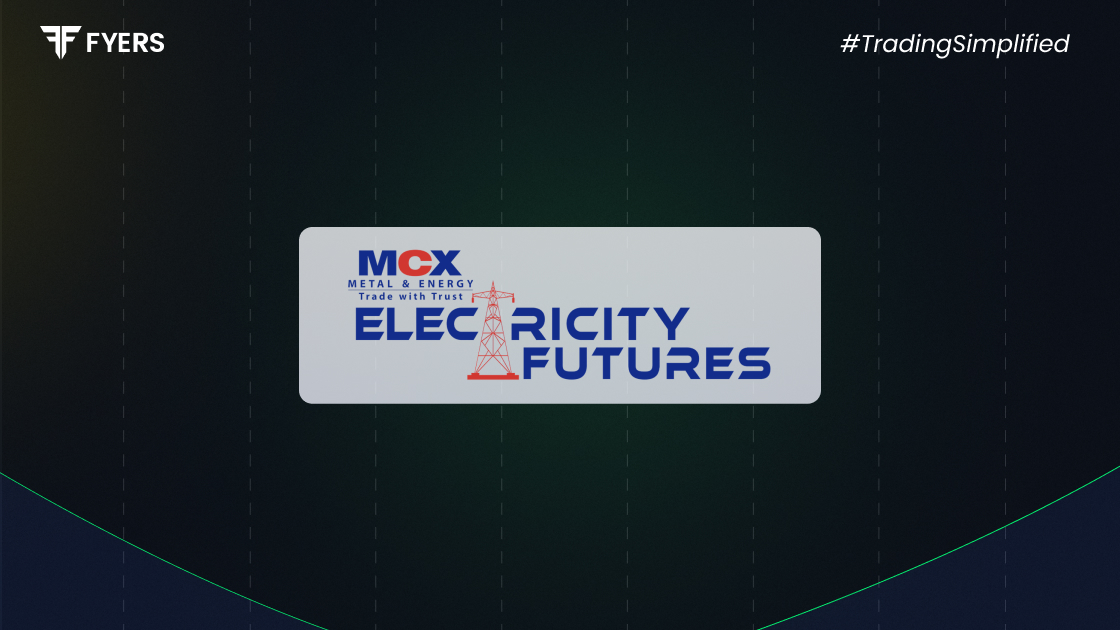

 23 Jul, 2025
23 Jul, 2025
 5 mins read
5 mins read

India’s power sector is undergoing a significant shift, driven by growing energy demand, evolving infrastructure, and a more dynamic approach to pricing mechanisms. One of the most recent and impactful developments has been the introduction of MCX electricity futures, which aim to bring transparency and efficiency to the way power is traded in the country.
With India’s economy expanding and energy needs intensifying, tools that facilitate better price discovery are not just welcome—they’re essential. In this article, we will explore how MCX electricity futures are influencing the power sector in India, improving market dynamics for both suppliers and consumers.
The power sector in India is one of the largest and most vital segments of the country's economy. It supports everything from manufacturing and agriculture to digital infrastructure and daily household needs. India is the third-largest producer and consumer of electricity globally, reflecting the scale and importance of this sector.
Despite ongoing reforms, the electric sector in India still grapples with issues such as high transmission losses, financial stress in distribution companies, and fluctuating tariffs. These factors have historically limited investment and operational efficiency, making the need for better financial tools even more pressing.
Electricity generation in India has seen consistent growth over the past decade. The country uses a mix of sources:
Thermal power (coal, gas, oil) – still dominant but slowly declining in share.
Renewable energy – growing rapidly with government incentives.
Hydropower and nuclear – remain smaller components but offer long-term potential.
As of 2025, over 40% of India’s installed capacity comes from non-fossil fuel sources. However, coal remains the primary fuel for base load generation, creating volatility in energy costs due to global commodity fluctuations.
India's power demand is surging, driven by factors such as:
Industrial expansion and Make in India initiatives
Urbanization and rising middle-class consumption
Electrification of transportation and rural areas
Digital infrastructure growth, including data centres
This growing demand directly correlates with the India GDP growth rate, as electricity is a key input for almost every economic activity. Meeting this demand efficiently requires robust pricing mechanisms, which is where MCX electricity futures come into play.
While the power sector has evolved, several structural challenges remain:
Price volatility: Energy prices can fluctuate drastically based on fuel availability and demand spikes.
Inefficient price discovery: Traditionally, power prices have been governed by long-term PPAs (power purchase agreements), leaving little room for dynamic pricing.
Discom financial health: Distribution companies (discoms) often face cash flow issues, delaying payments and impacting the supply chain.
Lack of a robust market platform: Until recently, there was limited participation in spot and derivatives markets for electricity.
These issues have contributed to inefficiencies that affect both producers and consumers in the electric sector in India.
Launched by the Multi Commodity Exchange (MCX), electricity futures are standardised contracts that allow participants to buy or sell electricity at a predetermined price for a future date.
Standard lot sizes (e.g., 1 megawatt-hour per contract)
Cash-settled contracts, eliminating the need for physical delivery
Regulated and transparent pricing via exchange platform
Open to power companies, traders, and large industrial consumers
MCX electricity futures provide a formal framework for hedging electricity price risks, improving price discovery and making the market more liquid and transparent.
MCX futures play a critical role in transforming the way electricity is priced in India:
Real-time market reflection: Prices reflect real-time expectations of supply, demand, and fuel costs.
Hedging opportunities: Power producers and consumers can lock in prices, reducing uncertainty.
Increased participation: More players entering the futures market improves pricing accuracy and reduces manipulation.
Benchmark formation: Futures contracts help in developing reference prices that guide spot and bilateral contracts.
As a result, MCX electricity futures are enabling India to move towards a more market-based energy economy.
The introduction of electricity futures has implications across the board:
Risk management: Hedge against price fluctuations in short-term markets.
Revenue predictability: Easier financial planning through locked-in rates.
Attract investors: A more transparent market makes the sector more investable.
Budget certainty: Fix power purchase costs in advance.
Procurement efficiency: Avoid peak pricing through smarter contracts.
Informed decision-making: Market signals help plan energy usage better.
This is especially relevant for large manufacturers and data centres, which are heavy electricity consumers.
Countries like the US, Germany, and Australia have mature electricity derivatives markets. India can learn from them by:
Encouraging greater participation from renewable generators
Promoting regional exchanges to address local power dynamics
Integrating forecasting tools for demand and weather
Reducing regulatory barriers to enhance liquidity and trust
Learning from these benchmarks can strengthen India's position as a leading energy economy.
The power sector in India is at an inflection point. While the country continues to invest in generation and infrastructure, financial innovation like MCX electricity futures is equally important. By improving price discovery, enabling hedging, and boosting transparency, these instruments are reshaping how electricity is traded.
For a growing economy with increasing power demand in India, efficient pricing tools are essential. As more Indian power companies and institutional players adopt this model, the market is likely to become more resilient, investor-friendly, and better aligned with the country’s development goals.
They help improve price discovery, reduce volatility, and allow power producers and consumers to hedge against price fluctuations in the electricity market.
Reliable and affordable electricity supports industries, infrastructure, and services—directly contributing to India’s GDP growth rate.
While adoption is still growing, companies like NTPC, Tata Power, and JSW Energy are exploring market-based tools to manage price risks.
Factors include industrial growth, urbanization, increased electrification, and a growing digital economy—all driving greater electricity consumption.
Calculate your Net P&L after deducting all the charges like Tax, Brokerage, etc.
Find your required margin.
Calculate the average price you paid for a stock and determine your total cost.
Estimate your investment growth. Calculate potential returns on one-time investments.
Forecast your investment returns. Understand potential growth with regular contributions.